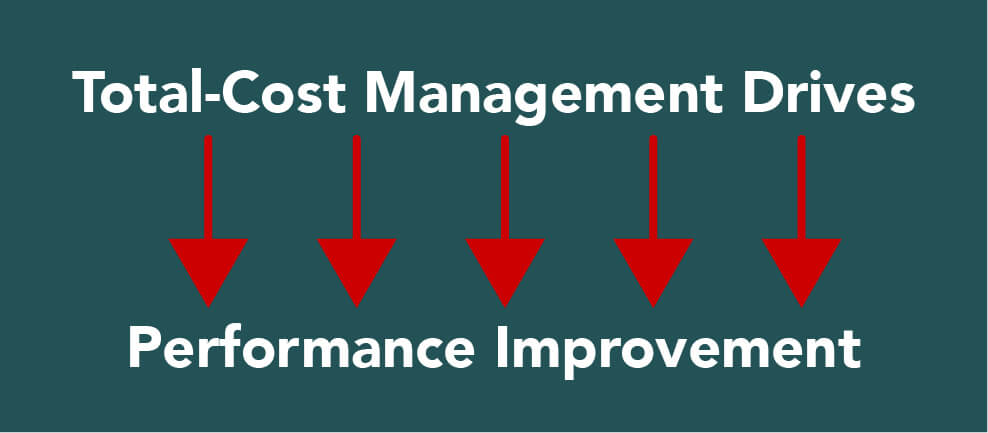May 16, 2023

Delivery Failures and Nursing Burden (Part 2): Advanced Logistics to the Rescue
This is Part 2 of a series on nursing burdens in healthcare. Part 1 looks at ways healthcare is wrestling with major logistical and financial challenges related to clinical staffing. Read Part 1 here.
Picture this: An hour before surgery at an outpatient facility, a nurse learns that the routine presurgical testing — sent to the lab days ago — never arrived. An error by the medical courier has caused an unfillable hole in the surgical schedule resulting in unused clinical time, an empty surgery suite and more work for the entire clinical team. The nurse, who already feels overburdened, has to inform the unhappy patient. The patient and family’s perception of confidence in the outpatient facility erodes.
How common is an example like this? Sadly, far more than most realize.
As chronicled in Part 1 of this series, a nationwide survey of the American Nurse Journal audience revealed that courier delivery failures substantially increase the already heavy burden that nurses carry. In fact, 87% of nurses surveyed said that medical courier deliveries, or lack thereof, have a negative impact on their work weekly.
 Courier failures include delayed and misplaced deliveries, sample mishandling and tracking errors. They lead to patient harm, schedule delays, repeat testing and higher costs. What’s more, the negative impact of isolated failures, like a single misdelivered blood sample, is compounded by compromising subsequent, interconnected activities.
Courier failures include delayed and misplaced deliveries, sample mishandling and tracking errors. They lead to patient harm, schedule delays, repeat testing and higher costs. What’s more, the negative impact of isolated failures, like a single misdelivered blood sample, is compounded by compromising subsequent, interconnected activities.
Nurses cope with frequent courier failure by creating workarounds. A nurse, like the one in our example, may drive the specimen to the lab themselves to ensure it arrives on time and effectively become their own courier. Alternatively, the nurse may choose to trust but verify, allowing the courier to make the delivery but remain vigilant in tracking the item’s progress to ensure it reaches the destination. This translates into more work and more burden.
Each added task that nurses undertake to compensate for delivery failures has significant opportunity costs. This incremental work depletes the amount of time clinicians can work at the top of their license, compromising efficiency and contributing to burnout. A single failure can have a sizable negative effect on the clinical team’s downstream productivity and effectiveness. This is particularly true during periods — such as now — when many nursing units are understaffed.
Well-deployed logistics go far beyond moving items from point A to point B. They coordinate interconnected activities within complex environments to minimize error, increase efficiency and reduce total costs. Other industries have embraced advanced logistics and benefited from their efficiency, reliability and cost-effectiveness.
Healthcare providers can adopt established logistics practices developed for other industries that eliminate the majority of courier delivery failures. It’s a low-risk way to improve both organizational performance and clinical work environments.
‘Unit Theory’ of Performance Excellence
A common mistake is equating the lowest unit cost with the lowest total overall cost. With couriers, this translates into ranking internal and/or external service providers based on their cost per mile or cost per delivery. While per-unit costs are important, they represent only one of the three inputs that collectively determine total costs.
 The second input is the quantity of units. For example, a courier who has the lowest per-mile cost but drives many unneeded miles will generate higher total costs.
The second input is the quantity of units. For example, a courier who has the lowest per-mile cost but drives many unneeded miles will generate higher total costs.
The third input is the quality of delivered units. Advanced logistics aided by technology make a minuscule number of errors, saving significant clinical time and supporting a high-quality patient and caregiver experience.
The phrase “total cost of care” captures the benefits of early and accurate diagnosis, appropriate care delivery and monitored recovery. Successful management of an entire care episode or preventative care engagement drives the best outcomes at the lowest costs by avoiding unnecessary tests, overstaffing and readmissions, all while delivering great customer service.
 Since the medical courier space has historically been a fragmented, data-poor environment, many providers have not had visibility into the downstream impact their courier has on care delivery. As a result, it is common for healthcare leaders to underestimate the complexity of logistics and default to the lowest unit-cost solutions. But unit price does not equal value. Even well-intentioned cost-conscious managers can end up saving pennies while losing dollars, and in the process failing to achieve the desired financial outcome.
Since the medical courier space has historically been a fragmented, data-poor environment, many providers have not had visibility into the downstream impact their courier has on care delivery. As a result, it is common for healthcare leaders to underestimate the complexity of logistics and default to the lowest unit-cost solutions. But unit price does not equal value. Even well-intentioned cost-conscious managers can end up saving pennies while losing dollars, and in the process failing to achieve the desired financial outcome.
With advanced logistics, suppliers embrace a higher per-unit cost to optimize efficiency (fewer units) and enhance unit quality (fewer errors). In this way, advanced logistics improves performance, delights internal customers like nurses, and lowers total costs.
A Total-Cost Operational Approach
Let’s start with what a total-cost operational approach is not. It is not a unit cost approach, where the dominant goal of the medical courier is to reduce the cost per unit (mile, stop, etc.). The corners cut to drive a lower cost per unit inherently and unavoidably result in more units and more errors. This creates the illusion of savings but an actual explosion of total cost.
A total-cost operational approach is more holistic. The logistics operation is elevated beyond a simple courier, to be more strategic and value-producing. The following factors are present in this high-functioning model.
- Mission Alignment. Advanced logistics drivers are employees of the organization who work within a cohesive system designed to achieve optimal performance within a total-cost framework. They receive rigorous training that emphasizes quality, customer service and productivity. Companies that have a contracted workforce have limited ability to manage courier performance.
- Intensity of Leadership and Management Support. Advanced logistics drivers receive regular performance feedback from managers, with the clear goal of optimizing organizational performance. These managers are not burdened by the dispatching and route coverage tasks that are common within the contracted workforce.
- Depth and Specialists. Advanced logistics companies employ specialists with subject-matter expertise to optimize performance, anticipate problems and identify opportunities for value. In a unit cost model, these investments appear as costs, counter to that model’s underlying approach to value.
- Purpose-Driven Technology and Data. Technology can enable workflows and support chain of custody tracking. Data that informs real-time learning can help eliminate redundancies and uncover optimization opportunities to improve performance and decision-making. When deployed with a robust governance program, this purpose-driven approach can help to ensure alignment and value.
Embrace Total-Cost Management
 While there are numerous competing priorities for health-system executives, there are good reasons for putting optimizing courier/ logistics services near the top of the list. First, rapid extension of the healthcare ecosystem to include more points of care across an expanding care continuum drives greater logistics dependency.
While there are numerous competing priorities for health-system executives, there are good reasons for putting optimizing courier/ logistics services near the top of the list. First, rapid extension of the healthcare ecosystem to include more points of care across an expanding care continuum drives greater logistics dependency.
Second, few strategies can so comprehensively generate returns on all four components of the quadruple aim: enhancing patient experience, improving population health (through better outcomes), reducing costs and improving the work life of healthcare providers.
Third, unlike performance improvement strategies that trigger change management anxiety among clinical staff, advanced logistics reduces nursing anxiety and burden by eliminating delivery failures through more dependable network processing. In this way, advanced logistics enhances clinical workflows.
Lastly, healthcare systems can implement high-quality logistics solutions quickly with proven commercial partners. Taken together, few performance improvement strategies can match advanced logistics for ease of execution and immediacy of payback.
Considering these motivators, now picture this: An hour before surgery at an outpatient center, the nurse reviews the results from the pre-surgical lab tests, which were received in plenty of time. The patient is ready for surgery, and the surgical suite has all the necessary supplies, instrument trays and equipment. The surgery is able to proceed without delay, and care is provided effectively and on time.
Now multiply that positive experience for patients and caregivers across an entire health system. Lab tests arrive on time. Pharmacy totes transport between facilities without loss. Supplies arrive efficiently and on time, so that nurses and other clinicians have the items they need, when they need them. The promise of healthcare gets just a little bit easier to deliver.





